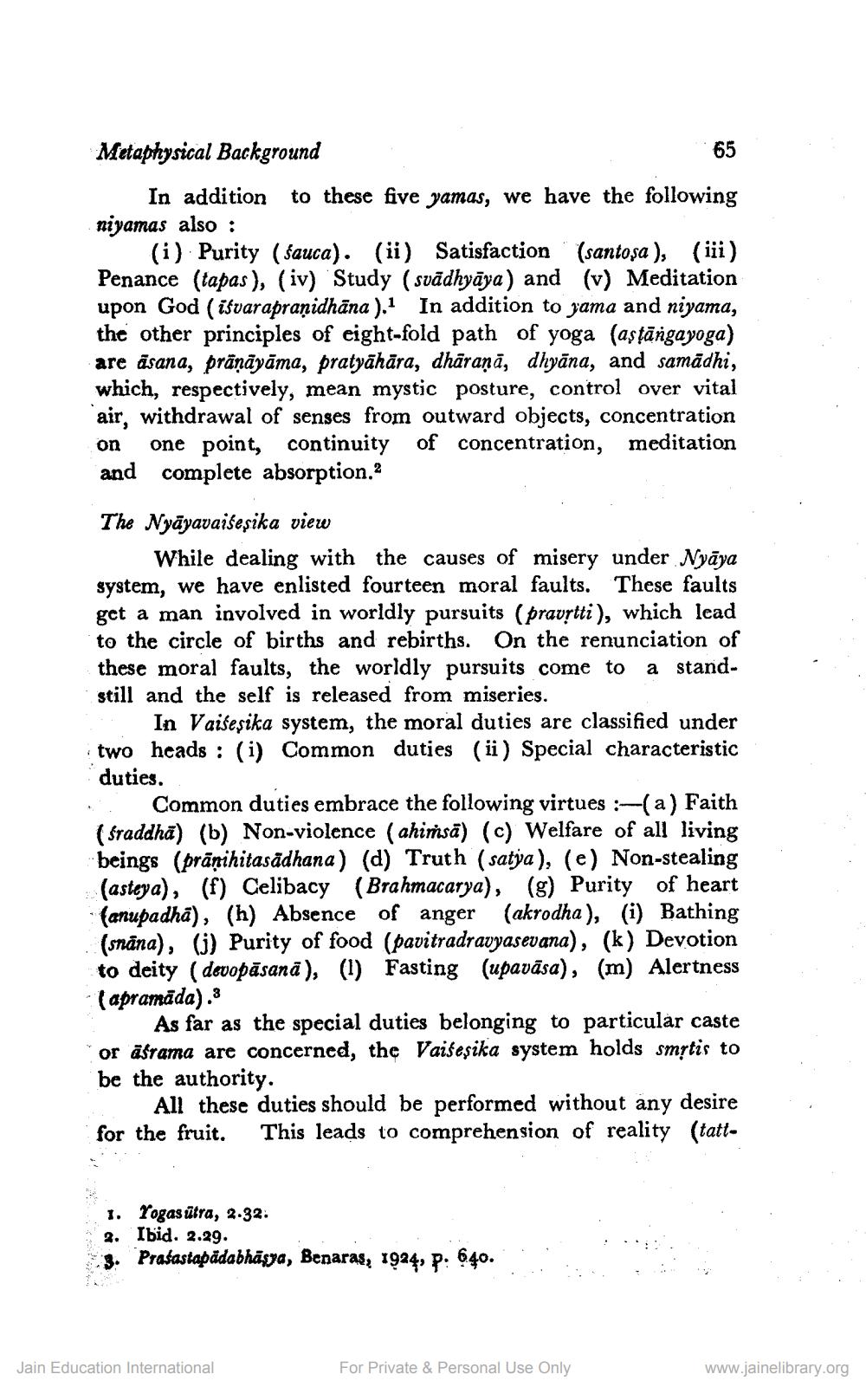________________
Metaphysical Background
In addition to these five yamas, we have the following niyamas also :
(i) Purity (sauca). (ii) Satisfaction (santosa), (iii) Penance (tapas), (iv) Study (svādhyāya) and (v) Meditation upon God (isvarapraṇidhāna).1 In addition to yama and niyama, the other principles of eight-fold path of yoga (aṣṭāngayoga) are asana, präṇāyāma, pratyāhāra, dhāraṇā, dhyana, and samadhi, which, respectively, mean mystic posture, control over vital air, withdrawal of senses from outward objects, concentration on one point, continuity of concentration, meditation and complete absorption.2
The Nyayavaisesika view
While dealing with the causes of misery under Nyāya system, we have enlisted fourteen moral faults. These faults get a man involved in worldly pursuits (pravṛtti), which lead to the circle of births and rebirths. On the renunciation of these moral faults, the worldly pursuits come to a standI still and the self is released from miseries.
In Vaiseşika system, the moral duties are classified under two heads: (i) Common duties (ii) Special characteristic duties.
65
Common duties embrace the following virtues :-(a) Faith (Sraddha) (b) Non-violence (ahimsa) (c) Welfare of all living beings (prāṇihitasādhana) (d) Truth (satya), (e) Non-stealing (asteya), (f) Celibacy (Brahmacarya), (g) Purity of heart (anupadha), (h) Absence of anger (akrodha), (i) Bathing (snāna), (j) Purity of food (pavitradravyasevana), (k) Devotion to deity (devopāsanā), (1) Fasting (upavāsa), (m) Alertness (apramāda).3
As far as the special duties belonging to particular caste or asrama are concerned, the Vaisesika system holds smṛtis to be the authority.
All these duties should be performed without any desire for the fruit. This leads to comprehension of reality (tatt
1. Yogasútra, 2.32.
2. Ibid. 2.29.
3. Prasastapādabhasya, Benaras, 1924, p. 640.
Jain Education International
For Private & Personal Use Only
www.jainelibrary.org




